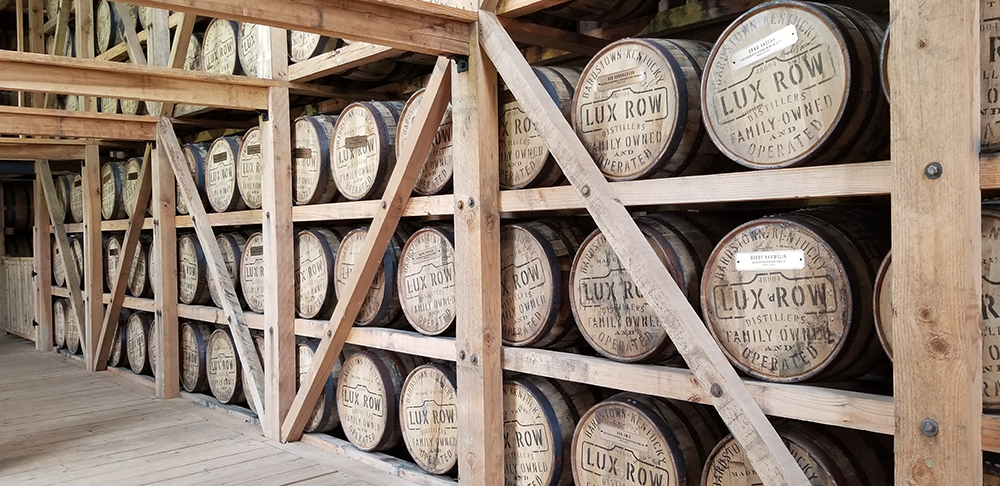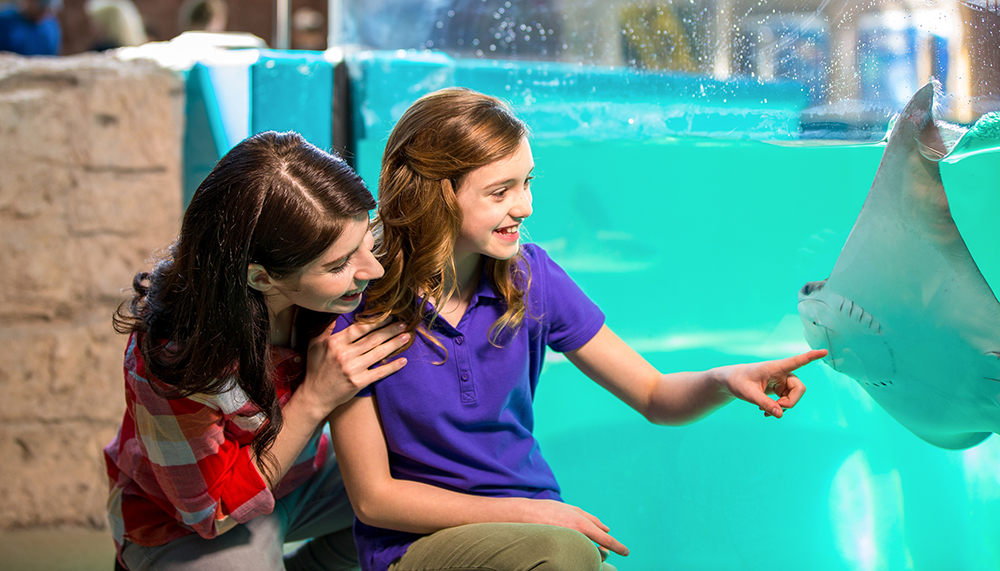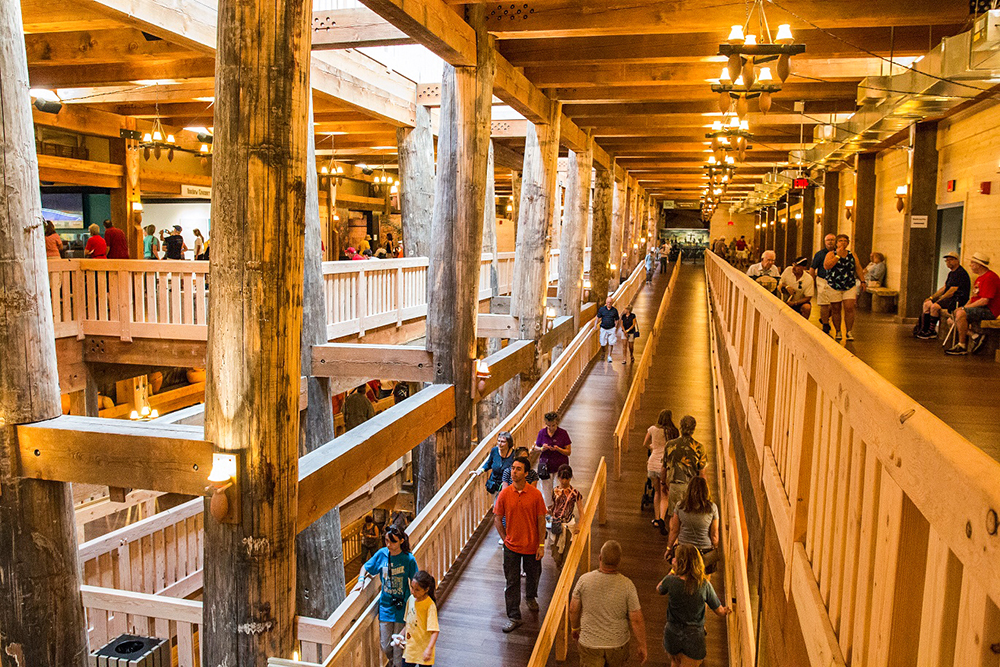Experience Kentucky

For families and foodies, history buffs and outdoors fans—the Bluegrass State has it all
Ask five people what their ideal Kentucky getaway looks like, and you’re likely to get five different answers—and that’s OK. The Bluegrass State offers such a variety of activities and attractions in its diverse regions, it’s easy to map out a trip that will make your whole crew happy.
Hit the road, and by the time you’ve blasted through your favorite playlist, you can be in a dream destination that isn’t far from your own backyard.
The Great Outdoors

Dawkins Line Rail Trail, Swamp Branch
For more than a century, the piercing whistle of a freight train was a daily occurrence for residents of rural Magoffin and Johnson counties. Now, the tinkling of bicycle bells has replaced the rumbling of trains, thanks to the multiuse, 18-mile Dawkins Line Rail Trail, the longest such trail in the state.
Remnants of the region’s railroad days remain. Cyclists pass through the 662-foot-long Gun Creek Tunnel and ride over old railroad trestles.
As riders dip in and out of the hills and valleys of Appalachia, they’re sure to observe rabbits nibbling gardens, farmers repairing barns and startled deer peering out from fields.
Yew Dell Botanical Gardens, Crestwood
Taking in vibrant, ephemeral tulips and daffodils at the 60-acre Yew Dell Botanical Gardens is a spring ritual for many. This year, see an additional 14,000 bulbs that were planted last fall, and now visitors are enjoying the fruits—well, the flowers—of that labor.
Wildflowers also are in bloom, and a stroll along the Woodland Trail, a 1.5-mile loop, is a pleasant way to take in the natural beauty.
Those with a green thumb shouldn’t miss the spring plant sale, April 27, 10 a.m.-3 p.m.
Lake Cumberland, Somerset
Beach-bound vacationers don’t have to hop on a plane. With more than 1,200 miles of shoreline stretching across seven southeastern Kentucky counties, Lake Cumberland is one big aquatic playground waiting for kids and kids-at-heart to bring their toys—like wakeboards and inner tubes.
Of course, not every visitor is a thrill seeker, and boaters in search of solitude often nestle their vessels in one of the lake’s ubiquitous small coves, an ideal spot for relaxation and wildlife viewing.

Carter Caves State Resort Park, Olive Hill
On the Cascade Cave Tour at Carter Caves State Resort Park, heads tilt up in unison as park naturalist and guide Paul Tierney points out a collection of stalactites called the Hanging Gardens of King Solomon in the Lake Room.
“People with imagination see a lot of different shapes up there on the ceiling,” Tierney says. “It’s like looking at clouds; everybody sees something different.”
In addition to its celebrated caves, the park offers 30 miles of hiking trails and a calm lake.
For bourbon enthusiasts

Lux Row Distillers, Bardstown
In the tasting room at Lux Row Distillers, the newest distillery on the Bourbon Trail, a group of bourbon enthusiasts sip and swirl their way through a trio of whiskeys that range from soft as satin to bold as brass.
A bourbon-and-chocolate pairing is the grand finale to a distillery tour that showcases the bourbon-making process.
Tour guide Annabelle Beam advises bourbon novices to use the tasting experience to determine if they prefer a wheat or rye bourbon.
“With wheat, it’s usually softer and sweeter. It picks up on the side of your tongue and is more mellow,” Beam explains. “With rye, it has more spice to it, kind of a peppery note, and it gives you a little more tingle on the tongue.”
MB Roland Distillery, Hopkinsville
The Distiller’s Tour at MB Roland craft distillery delves deeply into a finely honed production process that harkens back to pre-Prohibition, long before the era of mass production.
The first lesson is about mash, the combination of grains used to make bourbon, which is always at least 51 percent corn.
Mash cookers the size of small swimming pools bubble away because carbon dioxide is produced as the yeast converts sugar into alcohol.
The bourbon is double pot distilled, then goes into the barrel at around 110 proof.
Wiseguy Lounge, Covington
The dimly lit Wiseguy Lounge, a bourbon-heavy speakeasy tucked away in Goodfellas Pizzeria, suddenly lights up like the Fourth of July.
Whoa! Somebody just ordered a broken hatchet, the complex but tantalizing, bourbon-based cocktail created by brand ambassador Kevin Rutkowski.
A bourbon-reduction syrup infused with roasted cinnamon and orange oil is poured into a coupe glass, then several mysterious aromatic liqueurs are added. Before serving, a twist of citrus oil is set aflame in a showstopping pyrotechnic display.
Tousey House Tavern, Burlington
True bourbon connoisseurs wet their whistle at Tousey House Tavern in Burlington. The $175 Gold Series flight includes a half-ounce pour of 99 Old Special Weller Reserve, Michter’s Single Barrel and a 14-year-old Van Winkle family reserve, but the main attraction is the elusive, 23-year-old Pappy Van Winkle, the oldest Van Winkle expression.
It’s as rare as a hen’s tooth outside of Kentucky, so out-of-state visitors savor this amber-colored elixir like it’s their last drink on the eve of Prohibition.
“Today’s bourbons tend to be high in proof, and they can have a hot, overbearing flavor,” General Manager Eric Morehead explains. “But this is only 95 proof, so it’s not as intrusive up front.”
A Family Affair
Owensboro Museum of Science and History
In Owensboro, kids in hard hats crawl deep into the bowels of a dark coal mine where danger lurks around every corner.
Don’t worry. There’s no violation of child labor laws here. The Owensboro Museum of Science and History recreates Depression-era life in the Daviess County Rudy Mine that closed in 1954.
At this “pony mine,” kids meet Toby, and learn the story of this coal-hauling animal that was kicked by a mule, but saved by a caring doctor.
The evolution of mining safety and the history of the coal industry in Kentucky are the focus in this exhibit, but there’s much more to see.
Explorium of Lexington
Walk on the moon, travel the globe and step inside a giant bubble all in one day! That’s the short list of kid-centric adventures at the Explorium of Lexington, a nine-gallery children’s museum where kids have so much fun, they don’t even realize they are learning.
Of course, mom and dad do, which is why families return again and again.
A new, large-scale Lite Brite exhibit is a another reason to visit now. Kids arrange glowing pegs to create neon rainbows or see their name in lights.

Newport Aquarium
At Newport Aquarium, a couple of excited kindergartners are swimming with silently flapping stingrays, or at least pretending they are.
It’s easy to do in the “Stingray Hideaway: Enter Their World” exhibit, because a 30-foot-long tunnel beneath a touch pool gets kids up close to these boneless wonders that look nothing like fish, but really are.
For little ones, the most exciting part is “petting” the marine creatures.
“Any time our guests are able to experience what it feels like to touch an animal, a personal relationship is built that leads to a lifetime of love and respect for those animals,” says Executive Director Eric Rose.

Ark Encounter, Williamstown
The 510-foot-long Ark Encounter in Williamstown is a sight to behold simply for its sheer size. After all, how often do you see something resembling a five-story cruise ship firmly docked in a Kentucky field?
According to the Biblical story, Noah received divine instruction to build an ark so he and his family would be spared when God annihilated a sinful, disobedient world in a global flood. He was tasked with saving the Earth’s animals, and a pair of every species was loaded onto the ark.
Numerous exhibits feature animatronic Biblical characters and sculpted animals.
History and Heritage
Abraham Lincoln Birthplace National Historical Park, Hodgenville
As the 16th president of the United States, Abraham Lincoln resided in the White House, the seat of power and one of the grandest mansions in the country, but the Abraham Lincoln Birthplace in Hodgenville is a reminder of his humble roots.
Lincoln was born February 12, 1809, in a single-room log cabin on a 116-acre farm called Sinking Spring.
View a historic cabin symbolic of Lincoln’s birthplace inside the grand, neoclassical First Lincoln Memorial.
Ashland—The Henry Clay Estate, Lexington
A guided tour of Ashland, the 19th-century plantation home of U.S. statesman Henry Clay (1777-1852), is awe inspiring, both because of the graceful Italianate and Greek Revival architecture of the 18-room mansion built by Clay’s son James (the original house was razed) and the political achievements of the man who first owned it.
Best known as “The Great Compromiser,” Clay held numerous political offices, but never realized his dream of the presidency.
Curator Eric Brooks says that while the mansion features an array of impressive furnishings and other artifacts that belonged to Clay and generations of his descendants, one of the most remarkable items is an unassuming volume on display in the octagonal-shaped library.
“A legacy of Clay that is often overlooked is his influence on Abraham Lincoln,” Brooks says. “The Life and Speeches of Henry Clay Vol. 1, given to Lincoln by Clay, is the only artifact known that directly connects the two.” (See page 10 for a review of the new book, Henry Clay: The Man Who Would Be President.)
Wall to Wall Murals, Paducah
The first sign of spring in Paducah brings the winter-weary out of their homes and onto an inviting riverfront lined by Robert Dafford’s eye-catching Wall to Wall Murals that chronicle the history of this charming western Kentucky city at the confluence of the Tennessee and Ohio Rivers.
More than 50 life-size panoramic murals painted on the floodwall extend three city blocks along Water Street, depicting significant events and scenes that cover everything from the city’s 1827 founding by William Clark of Lewis and Clark fame, to its 19th-century heyday as a bustling riverboat port, to Civil War history and beyond.
The Museum at Perryville Battlefield State Historic Site, Perryville
A highlight of a visit to the Perryville Battlefield State Historic Site is the small but informative museum that recounts the 1862 Battle of Perryville, the most significant Civil War engagement fought in Kentucky.
Artifacts include an array of weaponry and uniforms, but Park Manager Joan House says her favorite is an easily overlooked soldier’s keepsake.
“Henry Sullivan, who fought at Perryville, kept with him a keepsake that contained his sister’s picture and a lock of her hair,” House says. “He carried it through the war until he was killed in the Battle of Atlanta in 1864. When the war ended, his friends carried that keepsake back to his sister and told her what had happened to her brother. That little thing really illustrates to me how tragic the war really was.”
Bon Appetit!

Bottle & Bond Kitchen and Bar, Bardstown
Bottle & Bond, the chic restaurant inside the new Bardstown Bourbon Company distillery, has a contemporary, high-end aesthetic both in its décor and cuisine, making it a popular lunch spot for those sipping their way along the Bourbon Trail.
The sleek architectural design is incongruous in a landscape dotted by weathered barns and ancient rickhouses, but it’s welcome all the same.
Comfort food is the name of the game here; it’s just a little fancier than what your mama made, and it’s served in a light-flooded space, thanks to floor-to-ceiling windows that offer a view of bucolic Kentucky farmland.
Mac and cheese, shrimp and grits, and a Frisbee-size, dry-aged porterhouse steak are among the enticing offerings.
Wash it down with your favorite bourbon or an innovative cocktail. The distillery produces some of the world’s finest brands.
Pizza Lupo, Louisville
At Pizza Lupo, a pizzeria in Louisville’s trendy Butchertown neighborhood, partner chef Max Balliet pulls a Neapolitan-style pizza from a 900-degree, wood-fired oven and smiles. Ah, perfect “leoparding,” as the slight char on the rim is called.
Sting Like a Bee, a nod to Louisville’s late Muhammad Ali, is one of the most popular pies. Balliet drizzles a little chili-infused honey over the soppressata salami and bubbling cheese and sends it out to his hungry customers.
Exotic toppings abound, but Balliet says, “It really is all about the dough,” which is fermented at room temperature for at least 24 hours.
His passion for pizza took him to Italy, where he ate dozens of pies, determined to bring those authentic Naples flavors back to Louisville.
The Blue Raven Restaurant & Pub, Pikeville
The Blue Raven in Pikeville serves what chef and owner Matt Corbin calls “pub-style Appalachian cuisine,” which means a menu heavy on the traditional Southern fare he grew up eating in his mother’s and grandmother’s kitchens in this mountain town.
He remembers hearty, two-handed meatloaf sandwiches as sheer bliss, but he tweaked his grandmother’s basic recipe and put his own signature on the dish.
Corbin takes special pride in his lump crab cakes served with tangy, roasted red pepper remoulade.
No, they aren’t exactly Appalachian, but Corbin learned to love them on family vacations to South Carolina as a kid, and now his customers do, too.
The menu changes seasonally, but these savory little gems are a staple.
Chaney’s Dairy Barn, Bowling Green
The ice cream served at Chaney’s Dairy Barn has always been made with Kentucky products when possible, but this spring, owners Carl and Debra Chaney are taking the locavore thing to the next level, using milk and cream from their own cows.
Some flavors scream, “Kentucky,” like bourbon crunch and mint julep.
Kids not only score a coveted cone, they also learn something about the source of their food.
A barn tour showcases a technologically advanced robotic milking system and allows kids to get acquainted with Jersey cows that don’t mind small, curious hands.
According to Debra, when children are asked where milk comes from, the answer is usually “Walmart” or “Kroger.”
“There are few kids that live on farms now, so they don’t get that milk comes from cows, but when they leave, they know,” she says.

